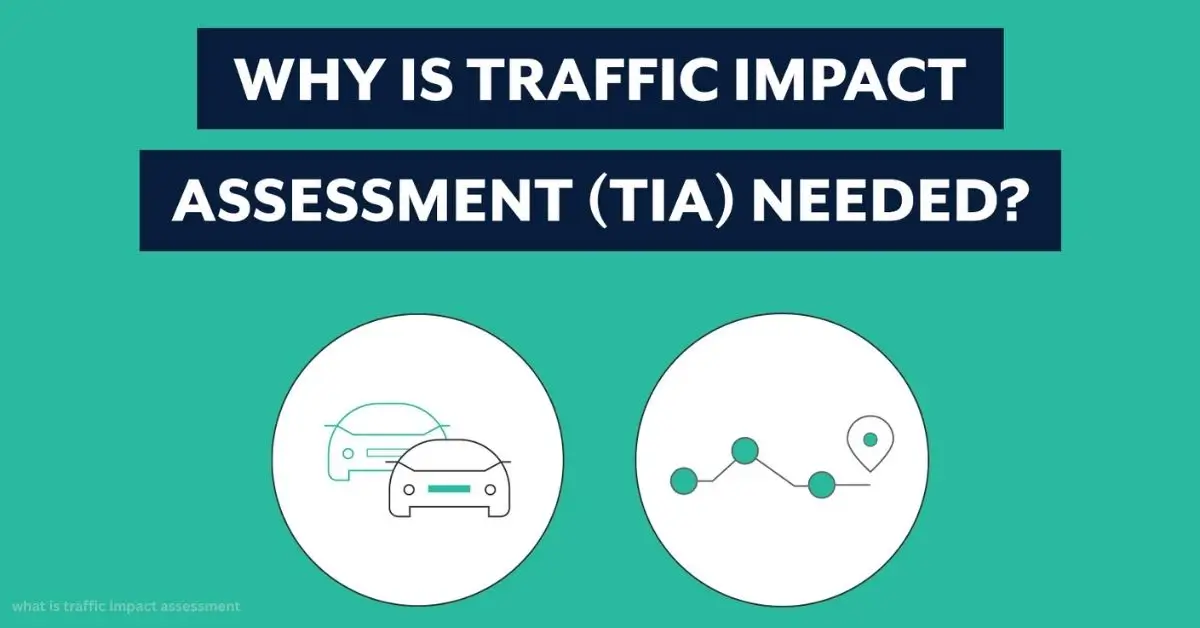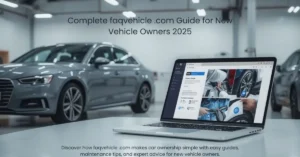Urban developments bring economic growth, convenience, and innovation, but they also bring traffic congestion, safety risks, and strain on infrastructure. Truth is, what is traffic impact assessment is a critical question for developers, urban planners, and regulators who want to manage these risks effectively.Studies show that early traffic planning reduces congestion by up to 30% in urban hubs (ITE, 2023). Experts like the UK Institution of Highways & Transportation emphasize TIAs for sustainable urban planning.
Unlock More Insights
Instant Answer
A Traffic Impact Assessment (TIA), also known as a Traffic Impact Study (TIS), is a critical engineering analysis that examines how a proposed new development will affect the surrounding transportation network.
It identifies potential problems and recommends mitigation measures to keep roads efficient and safe.
What Exactly is a Traffic Impact Assessment?

A TIA is a structured analysis of a proposed development’s traffic impact. It compares current traffic patterns with projections after construction, considering vehicles, pedestrians, and cyclists.
This includes estimating Average Annual Daily Traffic (AADT), identifying congestion points, and evaluating accident risks. For example, Orbit Chemicals’ expansion in Nairobi used a TIA to plan access roads, signal timing, and warehouse traffic flow.
What’s the Key difference between TIA and TIS?
| Aspect | Traffic Impact Assessment (TIA) | Traffic Impact Study (TIS) |
|---|---|---|
| Primary Focus | Evaluates traffic flow, congestion, and intersection performance | Covers broader implications, including environmental impact, public transit integration, and community effects |
| Analysis Depth | Peak-hour traffic, intersection capacity, turning lanes, and road safety | Multimodal assessment: pedestrian/bicycle safety, environmental factors, land use, and long-term traffic forecasts |
| Regulatory Requirement | Often mandatory for municipal approvals; core for planning applications | Usually optional or supplementary; provides additional insights for complex or large-scale developments |
| Practical Use | Helps developers optimize road network efficiency and anticipate congestion | Assists urban planners and regulators in evaluating overall sustainability, including compliance with environmental and transit policies |
| Data & Stats | 70% of U.S. states treat TIAs and TIS as separate studies; ignoring the difference can delay approvals | Competitors often overlook this distinction, reducing credibility in planning and regulatory reviews |
| Real-World Example | A new retail center conducts a TIA to assess intersection delays and peak traffic flow | The same project might include a TIS to examine air quality impacts, public transport access, and pedestrian safety |
Why Your Project Can’t Skip a Traffic Assessment
Ignoring a TIA can lead to unsafe roads, denied permits, and costly redesigns. Projects without traffic analysis often cause bottlenecks or violate local regulations.
Early TIA implementation informs developers where road widening, signals, or turning lanes are necessary, reducing long-term costs. Studies in Bermuda show TIA requirements prevented severe congestion in Hamilton’s City Plan 2001.
Who Should Do a Traffic Impact Assessment?
Certified traffic engineers or consultants usually conduct TIAs. Professionals with PTOE (Professional Traffic Operations Engineer) certification ensure accurate modeling and mitigation planning.
Developers work with local authorities and urban planners to align studies with regulatory thresholds, often using tools like Synchro, VISSIM, or GIS for simulation.
How a Traffic Consultant Can Save Your Project
Traffic consultants identify congestion hotspots, predict safety risks, and propose mitigation strategies before construction. Their expertise ensures smooth approvals and safe integration into the existing road network.
Case studies highlight consultants reducing peak-hour delays by up to 25% with strategic signal adjustments and optimized turning lanes.
When Do You Really Need a Traffic Assessment?

Large residential, commercial, or industrial developments usually require a TIA. Many local governments mandate studies if projects generate over 100 peak-hour trips.
Hospitals, shopping centers, and transport hubs often trigger TIA requirements. Smaller developments may submit a simpler traffic statement, but thresholds vary by jurisdiction.
Table of Common development Types vs. TIA thresholds:
| Development Type | Typical TIA Threshold | Notes |
|---|---|---|
| Large Residential Complex | >100 peak-hour trips | Often requires full TIA; smaller housing projects may only need a Traffic Impact Statement (TIS) |
| Commercial / Shopping Center | >100 peak-hour trips | Thresholds vary by local authority; includes retail malls and supermarkets |
| Industrial Facility | >100 peak-hour trips | Includes factories, warehouses, and logistics hubs |
| Hospital / Healthcare Facility | Any significant traffic increase | Healthcare facilities often trigger full TIA due to critical access and safety considerations |
| Transport Hubs (e.g., bus/train stations) | Any significant traffic increase | Thresholds depend on projected passenger/vehicle flows; TIA ensures safe integration with road network |
| Small-scale Developments | Below threshold | May submit a simpler TIS instead of a full TIA depending on jurisdiction |
What Are the Must-Follow Traffic Assessment Guidelines?
TIAs follow structured guidelines: project scoping, data collection, trip generation, intersection capacity analysis, and mitigation planning. Compliance ensures accurate assessment and regulatory approval.
Tools like AADT estimation, volume/capacity ratio, pedestrian/bicycle safety evaluation, and environmental impact assessment strengthen the report.
How Traffic Studies Shape Urban Planning?
TIAs inform urban planning decisions, balancing development needs with community safety and sustainable transport. They guide investments in roads, public transit, and multi-modal infrastructure.
TIAs help forecast long-term traffic trends and environmental impacts, ensuring that new developments enhance, rather than compromise, mobility.
Sources
- AIP Publishing: Comparison of Traffic Impact Assessment (TIA) and Transportation Assessment (TA).
- American Planning Association: Are Traffic Impact Studies Still “Junk Science”?
- Australasian Transport Research Forum: A best practice evaluation of traffic impact assessment guidelines in Australia and New Zealand.
- Department of Planning, Bermuda: Traffic Impact Assessments.
- Institute of Transportation Engineers (ITE) Western District: Major Changes in Trip Generation for Large-Scale Residential Projects.
Conclusion
Traffic impact assessments are a cornerstone of responsible urban planning and development. Understanding what is traffic impact assessment helps developers, planners, and local authorities anticipate traffic challenges, improve road safety, and ensure projects integrate smoothly with existing transport networks.
By conducting a thorough assessment, you can identify congestion risks, plan mitigation strategies, and make informed decisions that balance growth with community and environmental needs. In short, knowing what is traffic impact assessment is essential for sustainable, safe, and efficient development planning.
FAQ’s
Q1: What is traffic impact assessment and why is it important?
A TIA evaluates how a development affects roads, safety, and traffic flow. It’s essential to prevent congestion, ensure safety, and meet regulatory requirements for permits and approvals.
Q2: How do I conduct a traffic impact study for a new development?
Certified traffic engineers collect traffic data, forecast trip generation, evaluate intersections, and propose mitigation measures guided by what is traffic impact assessment to manage congestion and ensure safety.
Q3: Who prepares a traffic impact analysis or traffic study?
Professional traffic engineers, often PTOE-certified, conduct traffic impact assessments for developers or government agencies, using tools like VISSIM, Synchro, and GIS.
Q4: How does a TIA affect development approval or permits?
Traffic impact assessments inform regulators of traffic impacts. Compliance with TIA recommendations is often a condition for planning approval, ensuring legal and safe project implementation.
Q5: When is a traffic impact statement required for construction projects?
Projects generating significant peak-hour trips typically over 100 require a TIS or TIA to analyze and mitigate traffic and safety impacts.
Q6: What mitigation measures are recommended in a TIA?
Measures include road widening, optimized signals, turning lanes, pedestrian crossings, and public transport integration informed by what is traffic impact assessment to improve flow and safety.
Author Bio
Jordan Hayes is a Senior Traffic Planner & Consultant. Jordan has 12 years of experience in traffic engineering, urban planning, and sustainable transport solutions, advising governments and private developers on what is traffic impact assessment globally.












